|
Blackhole Amateur Rocketry Club (BAR) Launch
at Telford site west
of Spokane November 18, 2006.
Only three people were at this launch, the Prefect, Harold Kellams, myself
(Gary Jacobs) and Dave. We each made one flight.
David flew his minimum diameter rocket which quickly went out of sight and
entered a different dimension. It was unfortunately lost.
My Cert one flight went to 707 feet (nice and easy low flight) on a
Rouse-Tech Monster Motors 38/240 motor with an Aerotech reload. The
flight was successful. No pictures were taken (too busy prepping the
rocket).
Harold launched his carbon fiber rocket which attained well over 5000 feet.
He was able to recover his carbon rocket using his radio direction finder.
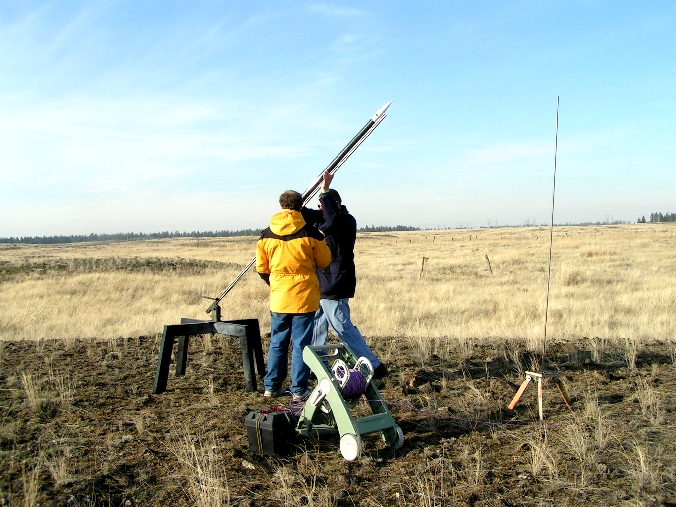 Harold raises his carbon fiber small diameter
rocket
into position while David looks on. |
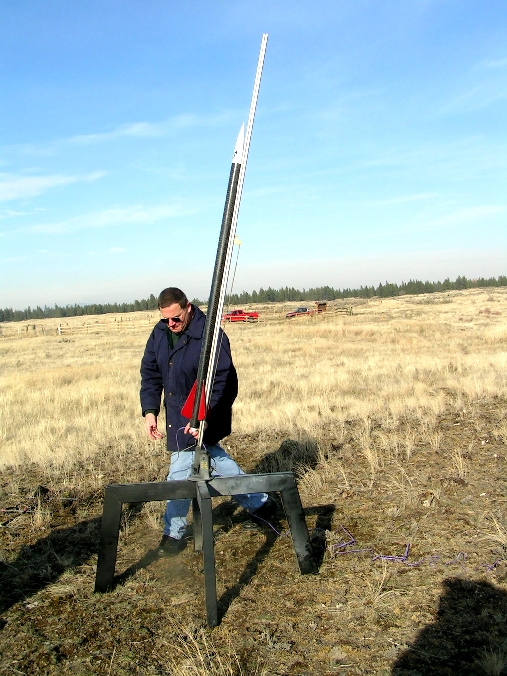 Harold does a last check before launching his
carbon fiber rocket. |

Dry Falls South of Grand Coulee Dam on the way
to the Telford launch site from Yakima |
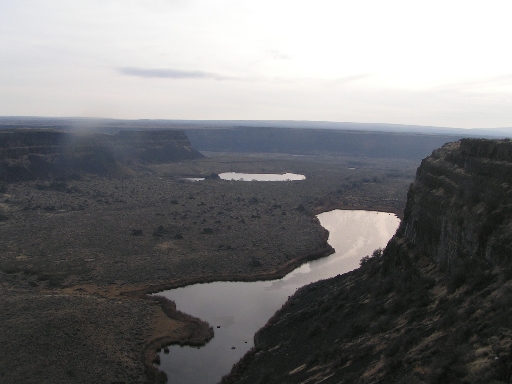
"Down stream" from Dry Falls
|
==================================================
MY LEVEL II CERTIFICATION AT FITS,
Memorial Day 2007
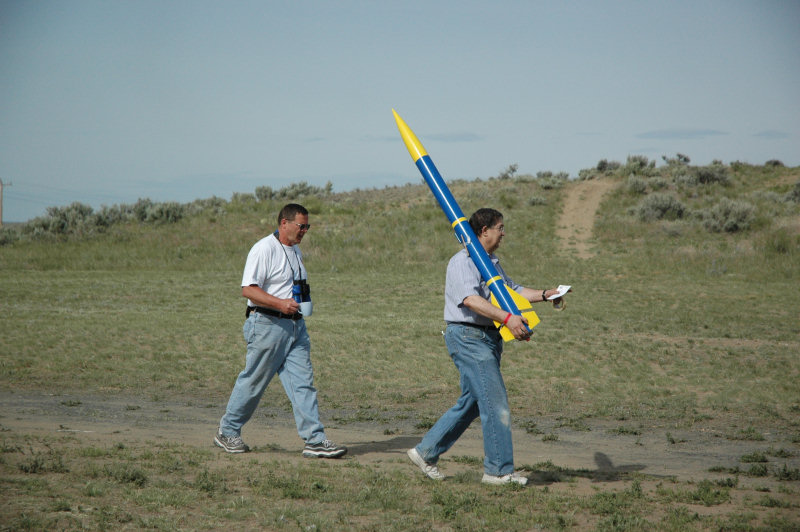 |
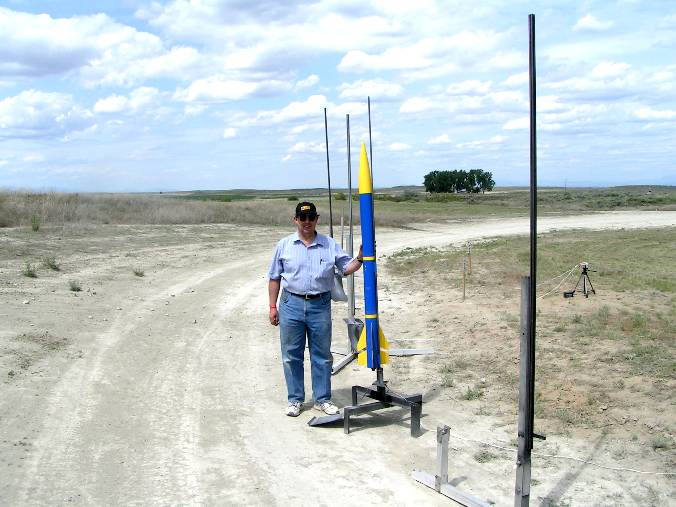 |
|
Heading out to the launch pad with
Black Rock Rocketry
Cub prefect, Harold Kellams. |
My first launch was unsuccessful so Harold suggested it
was because we didn't get a picture of me with the rocket before the
flight. It must have worked because the second try was successful.
|
 |
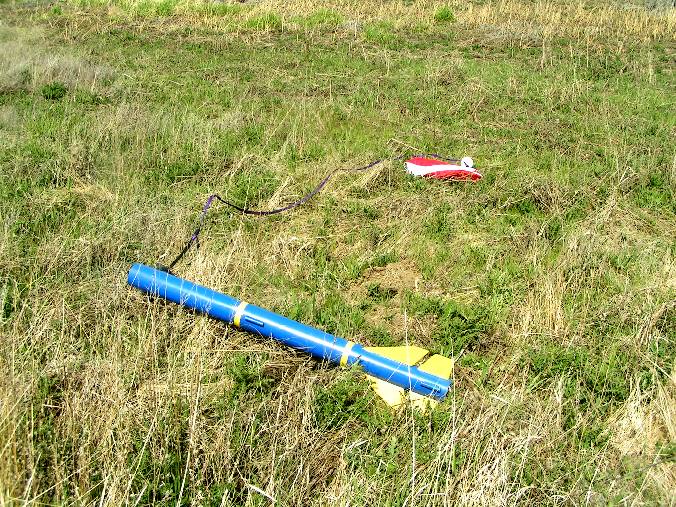 |
|
The roar of a high power rocket taking off is
exhilarating! It looks pretty neat, too. The picture isn't
real good because it is actually just a frame from the video I shot of
it. You just plain would have to be lucky to get a still shot at this
point. |
And there it is, the end of the successful level II
launch with the parachute deployed and a nice soft landing in the grass. |
| |
|
|
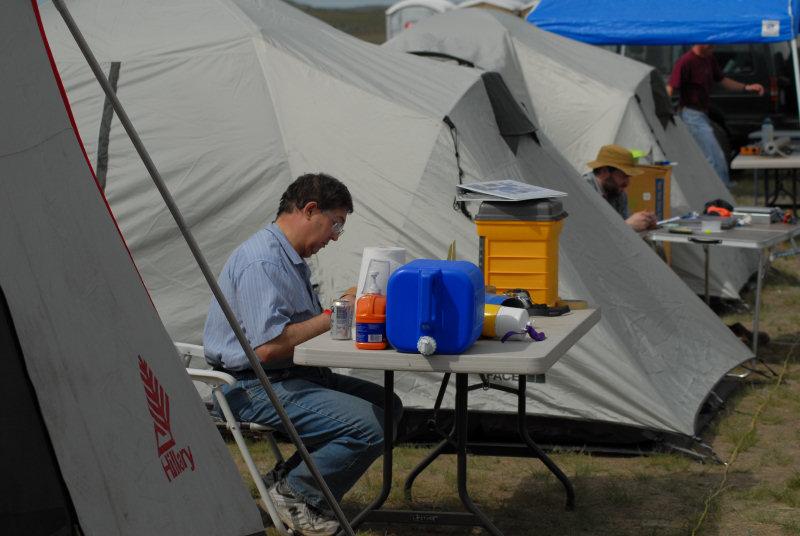 This is me sitting at my table repairing my rocket after the first
failed attempt. My first attempt failed because the main chute
deployed prematurely and ripped the shock cord right out of the piston.
The nose cone separated and landed by its chute a long ways away, and
the main rocket came down with just the drogue and so made a pretty hard
landing. Fortunately, it landed in soft dirt so the landing didn't
hurt it any. My prefect was nice enough to keep an eye on the main
chute with the nose cone and actually retrieved it for me while I
recovered the main body in a different location. The rocket had an
altimeter that was set up for dual deployment with a drogue at apogee
and the main set to deploy lower to the ground. The reason it
separated early was because the joint was too loose. For the
second attempt, to make sure there was no problem, I reset the altimeter
for single deployment of the main chute at apogee with a backup charge a
couple seconds later at apogee. I taped the main section together
so it couldn't separate. This is me sitting at my table repairing my rocket after the first
failed attempt. My first attempt failed because the main chute
deployed prematurely and ripped the shock cord right out of the piston.
The nose cone separated and landed by its chute a long ways away, and
the main rocket came down with just the drogue and so made a pretty hard
landing. Fortunately, it landed in soft dirt so the landing didn't
hurt it any. My prefect was nice enough to keep an eye on the main
chute with the nose cone and actually retrieved it for me while I
recovered the main body in a different location. The rocket had an
altimeter that was set up for dual deployment with a drogue at apogee
and the main set to deploy lower to the ground. The reason it
separated early was because the joint was too loose. For the
second attempt, to make sure there was no problem, I reset the altimeter
for single deployment of the main chute at apogee with a backup charge a
couple seconds later at apogee. I taped the main section together
so it couldn't separate.
It was fortunate that I had brought along lots of repair stuff
including the propane powered soldering pen I had just bought before the
trip. I used it to rewire the altimeter to put both charges on the
main chute between the nosecone and the body. I also had to do a
little repair work on one fin. |
|
Click here for the video clip of my launch.
4 Mbytes |
Home ||
High Power Rocketry ||
Experimental Rocketry
|
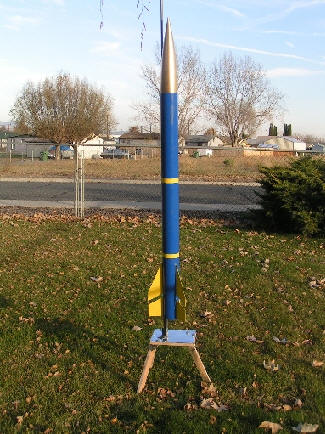








 This is me sitting at my table repairing my rocket after the first
failed attempt. My first attempt failed because the main chute
deployed prematurely and ripped the shock cord right out of the piston.
The nose cone separated and landed by its chute a long ways away, and
the main rocket came down with just the drogue and so made a pretty hard
landing. Fortunately, it landed in soft dirt so the landing didn't
hurt it any. My prefect was nice enough to keep an eye on the main
chute with the nose cone and actually retrieved it for me while I
recovered the main body in a different location. The rocket had an
altimeter that was set up for dual deployment with a drogue at apogee
and the main set to deploy lower to the ground. The reason it
separated early was because the joint was too loose. For the
second attempt, to make sure there was no problem, I reset the altimeter
for single deployment of the main chute at apogee with a backup charge a
couple seconds later at apogee. I taped the main section together
so it couldn't separate.
This is me sitting at my table repairing my rocket after the first
failed attempt. My first attempt failed because the main chute
deployed prematurely and ripped the shock cord right out of the piston.
The nose cone separated and landed by its chute a long ways away, and
the main rocket came down with just the drogue and so made a pretty hard
landing. Fortunately, it landed in soft dirt so the landing didn't
hurt it any. My prefect was nice enough to keep an eye on the main
chute with the nose cone and actually retrieved it for me while I
recovered the main body in a different location. The rocket had an
altimeter that was set up for dual deployment with a drogue at apogee
and the main set to deploy lower to the ground. The reason it
separated early was because the joint was too loose. For the
second attempt, to make sure there was no problem, I reset the altimeter
for single deployment of the main chute at apogee with a backup charge a
couple seconds later at apogee. I taped the main section together
so it couldn't separate.